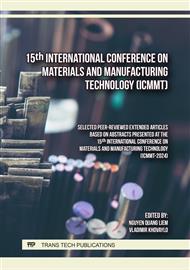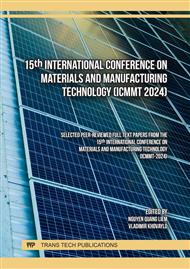p.3
p.9
p.19
p.27
p.35
p.41
p.51
p.59
p.67
Effect of Printing Resolution on the Dimensional Change and Microstructure of the Additive-Manufactured Parts for Dental Applications
Abstract:
The study investigates the impact of printing resolution on the dimensional change and microstructure of additive-manufactured parts, specifically dental crowns produced through binder jetting and sintering. Dental crowns are crucial for dental restoration, providing strength and support to damaged teeth. The additive manufacturing process involves digital scanning, 3D metal printing, sintering, and post-processing. The focus here is on the dimensional accuracy and microstructure of the sintered parts made from 17-4PH stainless steel powder. Two printing resolutions, 250 μm and 400 μm, are evaluated to observe their effects on the final properties. Results reveal that printed parts exhibit a significant enlargement (17-19%) due to allowances for binder removal during sintering. Sintered parts, while smaller than printed parts, still exhibit a 4-7% enlargement compared to the original CAD model. Microstructural analysis indicates the presence of ferrite and austenite matrix structures, with particles identified as silicon dioxide residue from the binder. The finer resolution (250 μm) shows greater particle area and count, leading to higher microhardness. These findings provide insights into the dimensional changes and microstructural features crucial for precision in dental applications utilizing additive manufacturing technology.
Info:
Periodical:
Pages:
35-40
Citation:
Online since:
September 2024
Price:
Сopyright:
© 2024 Trans Tech Publications Ltd. All Rights Reserved
Share:
Citation:



